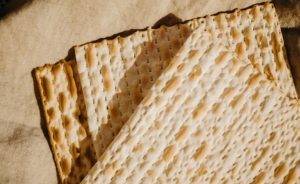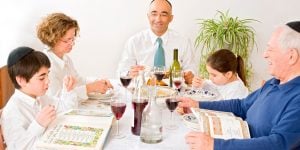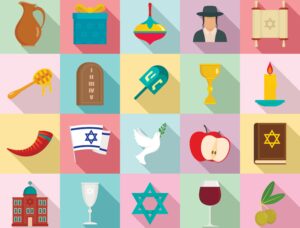Jerusalem, the ancient and modern capital city of Israel, has been home to the Jewish people for thousands of years. As the times became more modern and more Jews arrived to Israel, the city began to expand outside the Old City. Jewish neighborhoods were established, starting with Mishkenot Sha’ananim, which today is part of the beautiful Yemin Moshe neighborhood. While there are dozens of neighborhoods in Jerusalem, some have an incredible history and story that is exciting to share.
Old City of Jerusalem
When passing through the ancient stone walls of the Old City of Jerusalem, it almost feels as though you have gone back in time. The narrow dimly lit streets hold more secrets and stories than one will ever know. Different types of people roam the streets, all with somewhere to go within the four quarters. The Jews, the Armenians, the Christians and the Arabs all have their holy sites inside of this tiny section of Jerusalem. One can enter through 7 of the open ancient gates, each leading to a place more mystical and different from the next. The walls surrounding the Old City were built in the 1500s.
Nachlaot
The Nachlaot neighborhood of Jerusalem is like something you have never seen before. Similar to the Old City with tiny ally ways that twist and turn, there is always music in the air and art work on display here. What began as a neighborhood to help with the overflow of Old City residents in 1882, is now an incredibly popular neighborhood. The popular street market, Shuk Machaneh Yehudah is also located inside Nachlaot, filled with stands offering different foods such as colorful spices, fruits and vegetables from across Israel, and with boutique restaurants.
Yemin Moshe
The Yemin Moshe neighborhood was established in 1892 as overflow housing for those in the Old City. The neighborhood was funded and named after Moses Montefiore, a British banker who helped established much of the “outside” world of Jerusalem. Today, the neighborhood is one of the most elegant in Jerusalem and lookout over the Old City walls.
German Colony
The German Colony of Jerusalem originally established as a Templer community in 1873. Templers from Germany moved to Israel to prepare for the Messiah and used local building materials to build schools and homes in European style. As World War Two began, the British Mandate deported the Templers, leaving empty buildings behind which were later used as homes for new immigrants once Israel established independance. Today, the German Colony is an upscale neighborhood in Jerusalem, and the main street, Emek Refaim is bustling with people, as it is full of cafes, restaurants and boutique shops. The Templers however are not forgotten as the original structures are up kept and used.

Mea Shearim
Walking through the streets of Mea Shearim, is unlike anything else. This Haredi (ultra-Orthodox) neighborhood is one of Jerusalem’s oldest and feels as though you’ve entered a 19th century Jewish village in Eastern Europe. Many of the Haredim that live there keep tradition as it was in Europe, choosing to learn and pray all day, and even dressing as they did back then. Most don’t even use technology! Walking through Mea Shearim is definitely an experience.

Nachalat Shiva
What is now considered part of the neighborhood of Nachlaot, Nachalat Shiva was the third neighborhood established outside the Old City. All the buildings in the area are restored to look as they did in the late 1800s, giving it a magical touch. Many of the streets are filled with cafes and tiny shops selling the most beautiful things. In the summer, colorful umbrellas hang from the rooftops giving shade to pedestrians from the hot Israeli sun.

American Colony
While the American Colony is not a neighborhood, it used to be a colony in Jerusalem and is a fascinating piece of histroy! In 1881, Anna and Horatio Spafford, originally from Chicago, moved to Jerusalem to establish the American Colony. The colony was established as a Christian utopian society next to Mount Scopus. The members did philanthropic work to help all residents of Jerusalem no matter what religion, by opening soup kitchens, hospitals, and other useful charities. By the 1940s, the colony was no longer religious but members continued to do charity work on their own. Today, the colony no longer exists but their main home space was turned into a beautiful hotel.

While these are just a few of Jerusalem’s largest and most famous neighborhoods, there are still plenty more to explore with an equally incredible history. Jerusalem is over a thousand years old, meaning there are mysteries and history packed into every place, even the ones established in modern times. Even a walk down the street of any of Jerusalem’s neighborhoods will bring the wonder to life.









